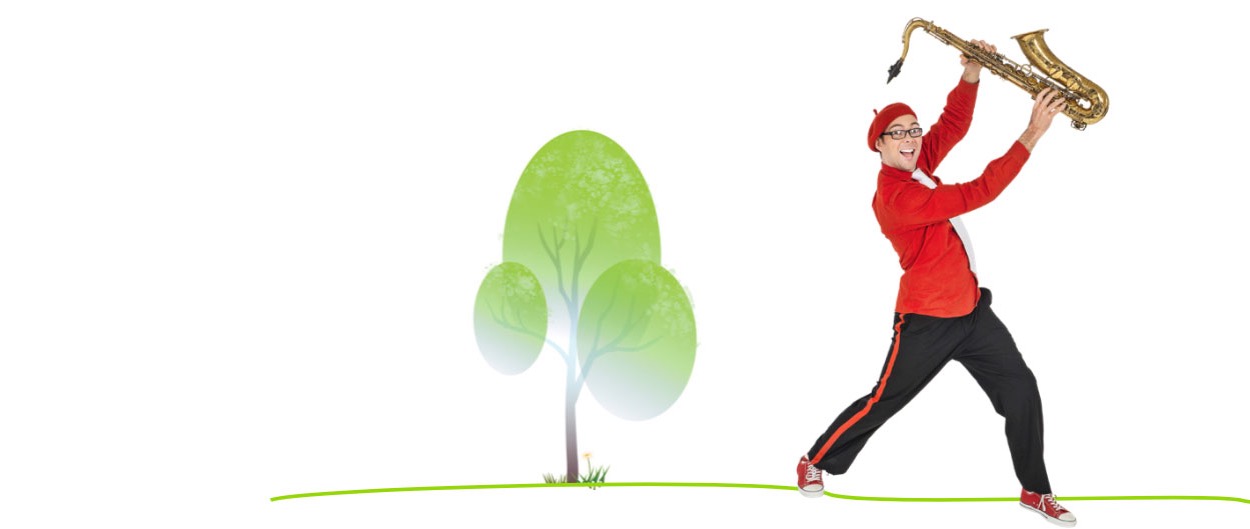

Timbre refers to the unique characteristics of the sounds produced by each different instrument or voice.
Timbre (pronounced ‘tam-ber’) is everything that helps us distinguish one instrument or voice from another. We use timbre to distinguish Lah- Lah’s voice from Buzz’s voice, Tom Tom’s drums from his hammering, and Squeezy Sneezy’s accordion from his sneezes!

- Understand that every voice and instrument has its own distinct sound
- Recognise timbres for familiar instruments
- Learn about instrument families
- Understand that sounds are produced in different ways, such as hitting, blowing, plucking and shaking.

All instruments, including our own voices, have a special sound that is unique to them. Can you describe the sound of a drum, or a triangle? Ask students to close their eyes as you play one or two familiar instruments. You recognise these instruments because you know their unique sounds – their timbre.
Now bring three students to the front of the class. Ask the remaining students to close their eyes while the three volunteers take turns singing the phrase, ‘Happy birthday to you’. Who sang first, second and third? We can figure this out because we know the timbre of our friends’ voices.
Teacher Tutorials
Explainer
Elaboration
Extension
Music Clips
Big, Bold and Brassy
Tinkering
Secret Sound - Panpipes
Lessons
Lesson 1
WALT: Describe the different sounds that instruments make.
Discussion starter
In the song ‘Big, Bold and Brassy’, Lah-Lah and Buzz describe the different sounds that brass instruments can make. Watch this clip with your class, asking students to focus on the words used to describe the sounds. What other words can you think of to describe the sounds that instruments make?
Learning task
Many things contribute to timbre, such as the material instruments are made from, their shape, the way they are played, the strength of the sounds produced, the pitch range of these sounds, and how those sounds vary over time. How would you describe the timbre of a flute? Or an electric guitar?
When describing timbre, we often use words that sound like the sounds they describe. For example, 'bangy', 'swishy', 'tooty' or 'woofy'. Another way to describe timbre is to compare sounds to other things you know, like saying a trumpet sounds like a car horn, or a bowed double bass sounds like a chainsaw. Timbre talk is creative, fun, and there are no wrong answers!
Students' suggested words could be recorded on an anchor chart as a way to build timbre vocabulary. As an extension activity, groups of students could complete a Venn diagram about the timbre of two given instruments, prompting them to identify the similar and different aspects of their sounds.
Lesson 2
WALT: Produce sounds in different ways.
Discussion starter
Watch the Lah-Lah’s Adventures clip ‘Tinkering’ with your class. How did the Big Live Band produce sounds in this song? Are there other ways to make sounds with instruments or other objects? Students’ responses might include shaking, strumming, blowing or squeezing. Can you think of instruments that can be played in more than one way? For example, you can play a violin by using a bow or by plucking its strings.
Learning task
Challenge students to make a simple instrument with materials found in the classroom. These might include a shaker, or rubber bands wrapped around a box. How do you make sounds with your instrument? How would you describe its timbre? Can your instrument be played in more than one way?
Lesson 3
WALT: Choose instruments based on their timbre.
Discussion starter
Watch the Lah-Lah’s Adventures clip ‘Tinkering’ with your class again. Are there any objects or instruments in our classroom that could be played by hammering, tapping or sawing? Can you think of anything else in the room that would make an interesting sound? How would you play it?
Learning task
Read aloud the book ‘We’re Going on a Bear Hunt’ by Michael Rosen and Helen Oxenbury, asking students to listen for sound words such as ‘splash splosh’ or ‘swishy swashy’. Which instruments or objects might be able to produce sounds like these? For example, ‘swishy swashy’ sounds could be achieved by sweeping on the carpet, or by rubbing two sheets of paper together.
Explain that students will use classroom objects to create a soundtrack for ‘We’re Going on a Bear Hunt’. Ask individuals or groups of students to make sounds for specific sound words in the book. This read aloud could be recorded to listen back to, and the activity could be repeated with other familiar books that include ‘sound words’.
Lesson 4
WALT: Distinguish between similar timbres.
Discussion starter
In pairs or small groups, ask students to think of two instruments that have a similar sound. What makes the timbres of these instruments similar? Perhaps they're from the same instrument family, or are they played in a similar way?
Next, can you think of an instrument that sounds similar to a classroom or household object? For example, banging on a saucepan lid can sound similar to a cymbal.
Learning task
Watch the Lah-Lah's Adventures clip 'Secret Sound - Panpipes' with your class. Did you recognise the timbre of the panpipes, or was it a new sound for you? Could you guess which instrument was playing, or was it a bit tricky? Can you think of other instruments or objects with a similar timbre? What makes them similar?
As an extension activity, the class could create their own Secret Sound game. Groups of students could record an instrument, play the sound for their classmates, and ask them to guess which of three similar-sounding objects produced the sound.
Assessment
What have you learnt about timbre? What are some of the things that give an instrument its own special sound? What else would you like to know?
Do students understand the concept of timbre, and can they articulate it? Can they identify the sounds of familiar instruments? Can they use adjectives to describe the timbre of these instruments?
Assessment strategies include:
- Teacher observations
- Checklists for the target knowledge and skills
- Photograph and annotate student work samples, such as Venn diagrams
- Record and document students’ ability to produce sounds in different ways.

